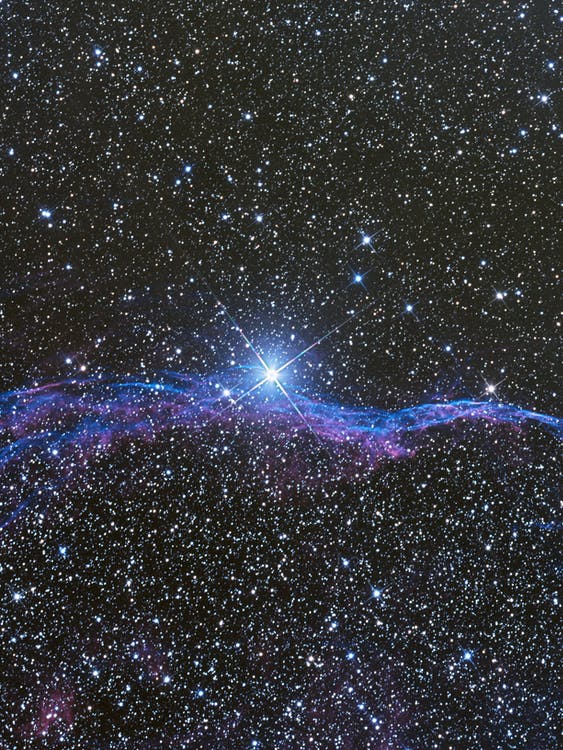Thermalization Of Radiation - A New Study Addresses The Issue
The problem of the thermalization of radiation within a self-emitting hydrogen isothermal environment is the subject of many recent studies.
Author:Suleman ShahReviewer:Han JuMay 13, 20221 Shares498 Views

For the situation of a hydrostatic profile of the plasma density, the problem of the thermalization of radiationwithin a self-emitting hydrogen isothermal environment is is subject of many studies. The probabilistic approach is used to determine the thermalization depth of a photon of a certain frequency. The value of the optical depth at which the radiation can be seen as thermalized up to a specific frequency is quantified. These findings are supported by the solutions to the radiative transfer equations. In a cool nonmagnetized and magnetised plasma, the frequency dependencies of the single-interaction free-free absorption probability are estimated.
Mikhail Gornostaev of Lomonosov Moscow State University in Russia studied the creation of the spectrum inside the atmosphere in a gravity field when the radiative transfer is regulated by the values of the effective mean path, characterising the photon of a certain frequency.
Thermalization Of Radiation
Consider a semi-infinite plane-parallel atmosphere made up of hydrogen plasma in the absence of a magnetic field. The situation of Thomson opacity limits the researcher's options. Because scattering is considered to be monochromatic, the effect of comptonization is ignored. In the dipole approximation, free-free processes are taken into consideration within the scope of the nonrelativistic treatment. The likelihood of free-free absorption in a single contact can be used to characterise a photon at a certain place in the atmosphere. Using the Planck distribution and a known temperature, it is possible to predict the frequency range in which practically all photons at the appropriate depth are thermalized. This work demonstrated that it appears possible to define the behaviour of the spectrum with regard to depth in termsof the typical frequency-dependent depth, which indicates the degree of thermalization of radiation (at a given point of space). Indeed, such a description is unrelated to the specific shape of the spectrum and so has only a qualitative meaning from this perspective. In the case of a hydrostatic atmosphere, the predominance of scattering causes such a characteristic optical depth to have a linear relationship with the frequency of radiation.
Radiative Transfer And Accreting Atmosphere
The solution of the radiative transfer equation under the specified conditions of the hydrostatic atmosphere with the predominance of scattering and without taking into account the change in photon frequency owing to scattering has previously been presented. If the atmosphere breaks the matter (as in the case of X-ray pulsars at low enough mass accretion rates), the atmosphere's structure becomes more intricate. Obviously, it is permissible to discuss the thermalized radiation partially (i.e., in a specific frequency range) only within the realistic ranges of the problem parameters. The section of the emergent radiation spectrum that corresponds to the majority of the contribution to the radiation energy density must be in the frequency range where scattering prevails in the region of spectrum creation—a criteria that X-ray radiation meets. Thus, in the case of a neutron star's atmosphere, temperatures of roughly 0.1 keV already allow photons to be thermalized virtually simultaneously at all frequencies as depth increases. The linear relationship between frequency and th is clearly shown in the case of white dwarfs, even though they have a wider temperature range than other stars.
Conclusion
The study concluded that the behaviour of quantities can be regarded as a property of solutions and radiative transfer equations, which appears to be relevant in theoretical discussions. Although the settings considered in this paper are extremely idealised, applications of the conclusions, at least for estimates, can be found; one example is the atmospheres of accreting strongly magnetic neutron stars.

Suleman Shah
Author
Suleman Shah is a researcher and freelance writer. As a researcher, he has worked with MNS University of Agriculture, Multan (Pakistan) and Texas A & M University (USA). He regularly writes science articles and blogs for science news website immersse.com and open access publishers OA Publishing London and Scientific Times. He loves to keep himself updated on scientific developments and convert these developments into everyday language to update the readers about the developments in the scientific era. His primary research focus is Plant sciences, and he contributed to this field by publishing his research in scientific journals and presenting his work at many Conferences.
Shah graduated from the University of Agriculture Faisalabad (Pakistan) and started his professional carrier with Jaffer Agro Services and later with the Agriculture Department of the Government of Pakistan. His research interest compelled and attracted him to proceed with his carrier in Plant sciences research. So, he started his Ph.D. in Soil Science at MNS University of Agriculture Multan (Pakistan). Later, he started working as a visiting scholar with Texas A&M University (USA).
Shah’s experience with big Open Excess publishers like Springers, Frontiers, MDPI, etc., testified to his belief in Open Access as a barrier-removing mechanism between researchers and the readers of their research. Shah believes that Open Access is revolutionizing the publication process and benefitting research in all fields.

Han Ju
Reviewer
Hello! I'm Han Ju, the heart behind World Wide Journals. My life is a unique tapestry woven from the threads of news, spirituality, and science, enriched by melodies from my guitar. Raised amidst tales of the ancient and the arcane, I developed a keen eye for the stories that truly matter. Through my work, I seek to bridge the seen with the unseen, marrying the rigor of science with the depth of spirituality.
Each article at World Wide Journals is a piece of this ongoing quest, blending analysis with personal reflection. Whether exploring quantum frontiers or strumming chords under the stars, my aim is to inspire and provoke thought, inviting you into a world where every discovery is a note in the grand symphony of existence.
Welcome aboard this journey of insight and exploration, where curiosity leads and music guides.
Latest Articles
Popular Articles